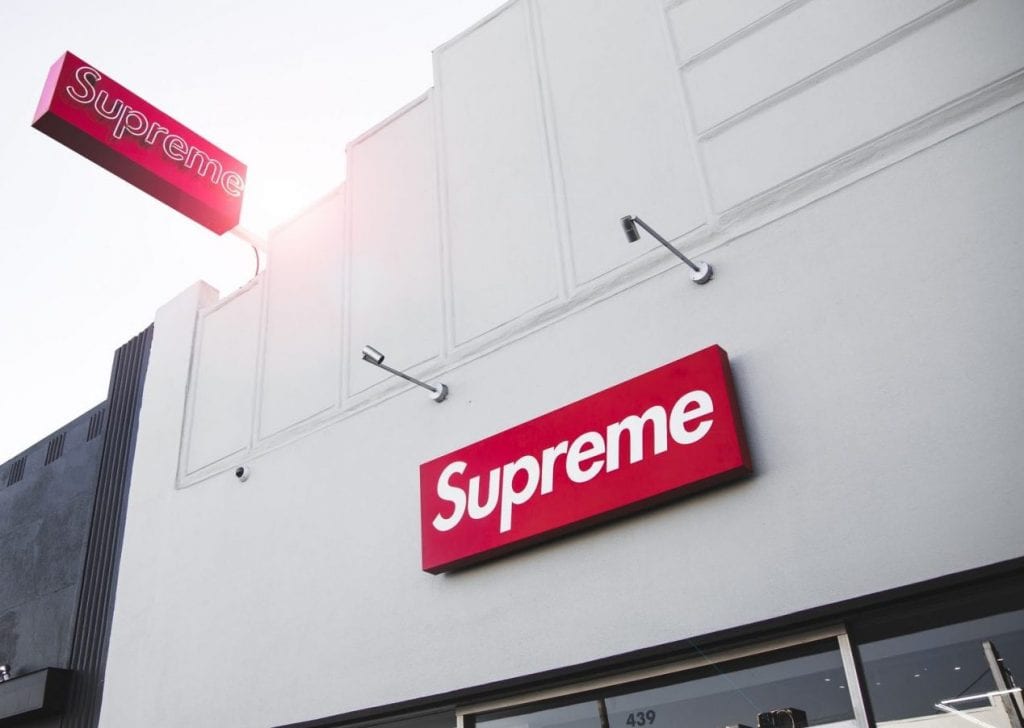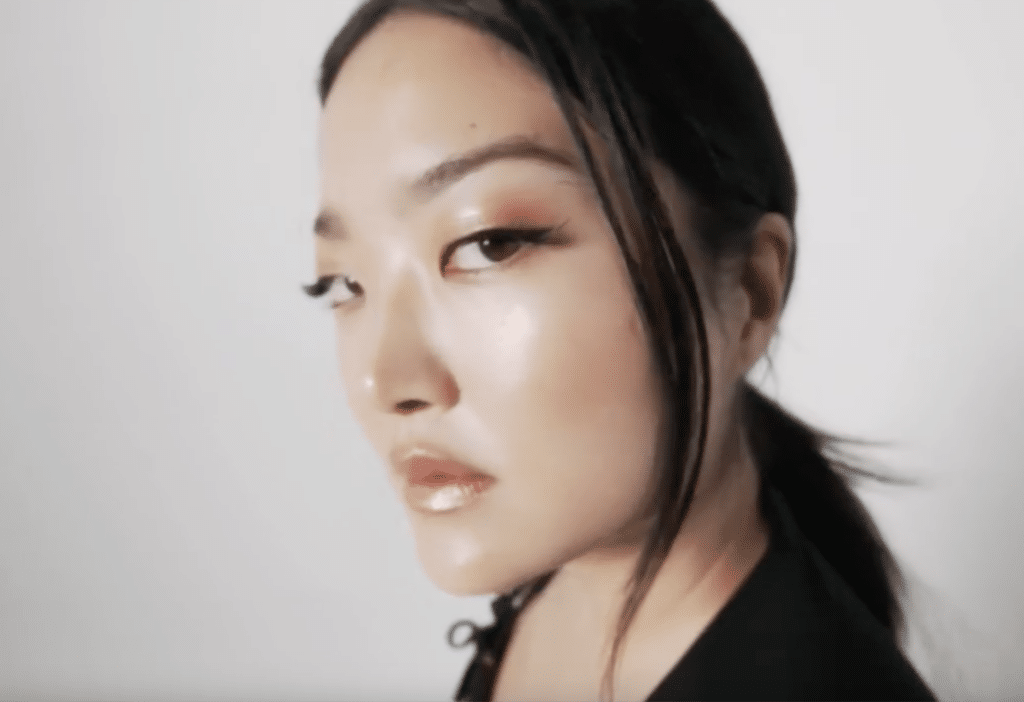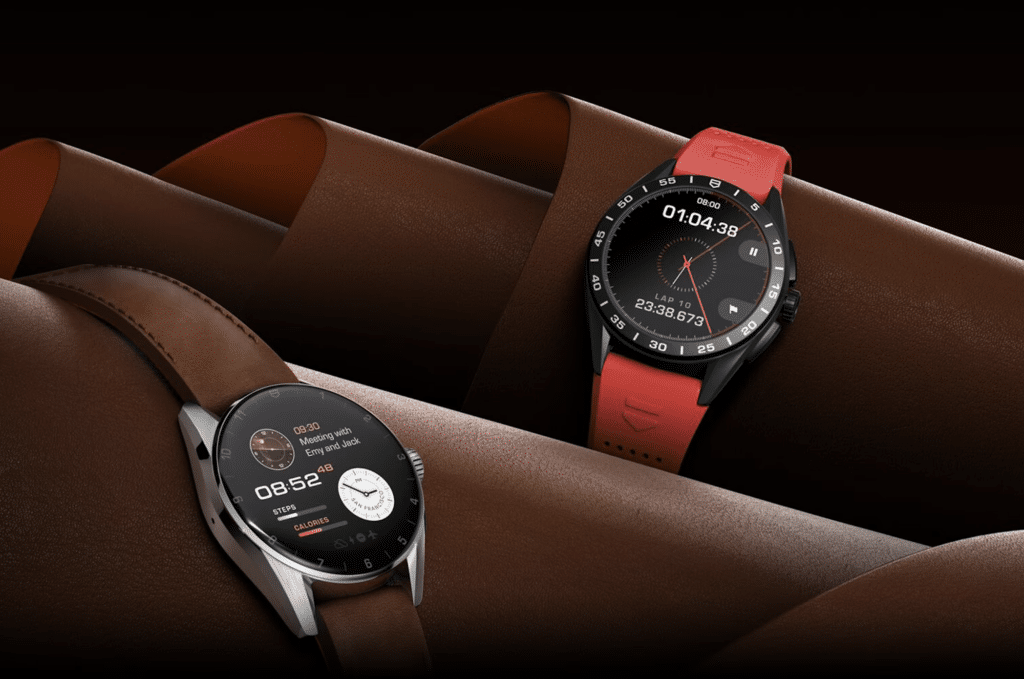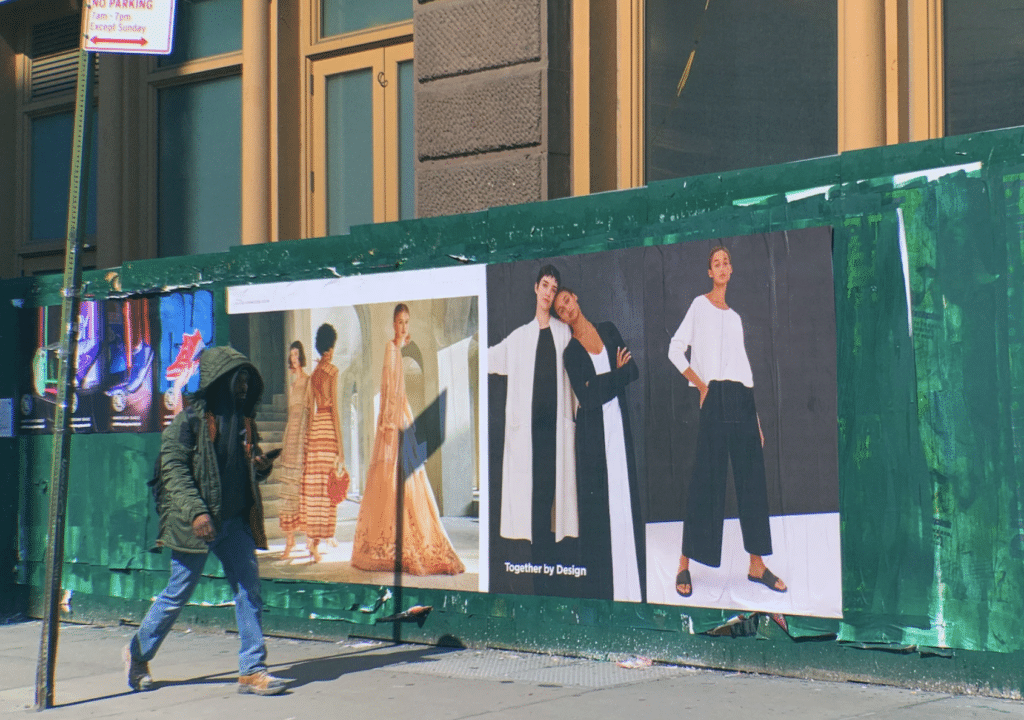Supreme made headlines on Monday when it was revealed that American retail group VF Corp. would pay $2.1 billion to bring the buzzy streetwear brand under its umbrella. Known for its arsenal of mass-market brands, from Vans and North Face to Eastpak and Timberland, the VF deal will see Supreme embark on a new era, particularly given that since its founding in 1994, the New York-based brand has pursued meticulously-calculated growth in terms of its physical footprint. It boasts just 12 stores in the world and an e-commerce site that only accepts orders from resident of the U.S., Canada, and Mexico. According to most accounts thus far, under the watch of VF, Supreme is expected to become a globally-reaching mass market brand.
A more expansive, volume-heavy model is likely what Supreme can expect – to some extent, at least – as it gets into bed with VF, the public-traded retail titan known for meeting consumer demand by pumping out puffy North Face jackets and slip on Vans, which amounted to a $13.8 billion business in 2019. And because VF Corp.’s model stretches beyond the U.S. market by way of various licensees, distributors and independently-operated partnership stores, Supreme is likely to boost revenues – by a “8 to 10 percent per year,” a more moderate rate than its fellow VF-owned brands, according to the Wall Street Journal – by expanding on an international scale.
The obvious point of initial expansion for Supreme is China, where demand is high and its physical and digital footprint is nonexistent. As VF Corp. chairman and CEO Steve Rendle told Highsnobiety on the heels of Monday’s acquisition announcement, “There are things that we can do to help [Supreme] move more quickly and more efficiently in order to service that consumer. China is an important opportunity.”
Such inevitable international expansion makes Supreme’s international trademark portfolio – which includes various elements of its branding, such as the word mark for its name and the design of its box logo – a key point of importance (and attention). At the same time, it sheds light on the brand’s ongoing issues in this realm, including one very specific globally-reaching legal battle that centers on the Supreme brand. On the opposite end of that fight? London-based holding company International Brand Firm (“IBF”), which has been readily catering to consumers in Italy, Spain, and even China by way of its own “Supreme” wares, banking on unmet demand for Supreme-branded wares, particularly given the brand’s tightly-controlled and relatively small distribution chain, which it has been relatively slow to expand beyond the confines of the U.S. and a small handful of other countries.
As has been heavily reported in the past (including by this site), while Supreme has been measured in its approach to penetrating international markets beyond the United Kingdom, France, and Japan, where it maintains brick-and-mortar stores, and similarly unhurried in seeking trademark registrations both in the U.S. and beyond, another company has been working overtime to do so. Thanks to its lookalike wares, its very-specific marketing (specifically, the notion of “legal fakes,” a concept that has no basis in law), and its overt and unabashed use of Supreme-specific branding, IBF and its related entities – including Trade Direct Srl, which does business as Supreme Italia – have “won over less-informed fans of [James Jebbia’s] streetwear brand and convinced retailers and shops that they were purchasing originals,” according to Italian IP attorney Silvia Grazioli of Bugnion SpA.
In addition to allegedly duping consumers and collaborators, such as Samsung, which seemingly-unknowingly teamed up with an IBF distributor in China in December 2018 for a collaboration with what it thought was James Jebbia’s Supreme (the Korean cell phone giant pulled the plug on the deal when a representative for Supreme clarified that Samsung had partnered with a “counterfeit organization”), IBF’s legal team has been quick to file Supreme-specific trademark applications in a number of countries, including Spain, Italy, San Marino, Tunisia, Mongolia, Israel, Indonesia, and Singapore.
Since 2015, IBF has filed at least 33 different trademark applications, according to the World Intellectual Property Office, and in several instances, the marks were registered by the national trademark bodies, namely in countries, such as San Marino, where parties are awarded trademark registrations based on being is the first to file an application and not for being the first to use a mark. (Depending in the jurisdiction, such registrations can, however, be challenged and invalidated if they were sought in bad faith, or in other words, in a deceptive manner).
These filings – which Supreme has maintained are, in fact, invalid and hardly indicative of actual trademark rights – paired with IBF’s opening of physical outposts and its pedaling of confusingly similar wares, have resulted in a legal onslaught waged by Supreme. The notoriously-quiet company, which hired a general counsel for the first time in 2017, has been actively challenging IBF’s activities since 2016 when it – or better yet, its intellectual property holding company, Chapter 4 Corp. – filed suit against Trade Direct. That litigation has spawned a number of other cases and trademark proceedings, most of which have seen Supreme challenge IBF’s trademark registrations on bad faith filing grounds.
All the while, Supreme – or better yet, its corporate entity, Chapter 4 Corp. – which first filed applications for its name and box logo in the U.S. in September 2011 – has been amassing trademark rights in the U.S. since it first began using its marks on its hot-selling t-shirts, skate decks, and other goods. It has also been accumulating trademark registrations with the U.S. Patent and Trademark Office (“USPTO”). (Unlike countries, such as San Marino, trademark rights are amassed in the U.S. by way of the actual use of a mark in commerce and not purely by way of a registration from the USPTO). But even with a strong body of trademark rights and registrations – and the goodwill that comes with them – to point to in the U.S., given that trademark rights (and registrations) are jurisdictional in nature, Supreme has held that “significant counterfeiting” activities are being carried out by foreign actors who are looking to piggyback on the globally-reaching “success of the Supreme brand.”
In addition to its domestic portfolio, Supreme’s lawyers began filing trademark applications for registration across the globe several years ago. In 2013, they filed to register the box logo in Great Britain. The following year, applications were filed in Germany, Chile, and Brazil, among other countries. 2015 saw the filing of applications in France and the Benelux, followed by Mexico, Malaysia, Philippines, European Union, Argentina, etc. in 2017, and Mexico, Finland, Norway, Romania, Slovakia, Poland, Mexico, Costa Rica, and Peru, just to name a few, in 2018. And more filings have followed since. As of June 2019, Supreme had “registered [its various branding elements, namely, its famed box logo] in more than 70 countries” and initiated proceedings to stop IBF from operating, including in China, the Wall Street Journal reported last summer.
Even with the foregoing filings in mind, the state of “Supreme” appears to still ensnared in legal battles to some extent. At the time of this publication, WIPO lists eight active trademark registrations for IBF – ranging from a black version of Supreme’s box logo for use on clothing and leather goods in San Marino and Italy to a yellow Supreme Spain logo for use on the same types of goods in Singapore and Spain, which implies that the parties are still actively engaged in trademark-specific proceedings and/or litigation on multiple fronts.
Interestingly, much of the value of a consumer-facing company in connection with an acquisition is derived from its arsenal of intellectual property, including its trademarks. In the case of Supreme, such enduring legal scuffles could stand to complicate matters both from an operations standpoint and in theory, in terms of the value of Supreme’s intangible assets. However, with a valuation of $2.1 billion, “roughly four times [its] trailing-12-month revenue,” according to the WSJ, the ugly multi-country trademark war over the Supreme brand does not appear to have dented its valuation too significantly, if at all.














